Session 4 Distribution and trade
The session was moderated by Holly Hapke, University of California, Irvine, USA. The speakers were: Anderson Kwasi Ahwireng, University of Amsterdam, Netherlands; Sharon Suri, University of Amsterdam; V. Vivekanandan, FishMARC, India; Moenieba Isaacs, University of Western Cape, South Africa; and Joeri Scholtens, University of Amsterdam.
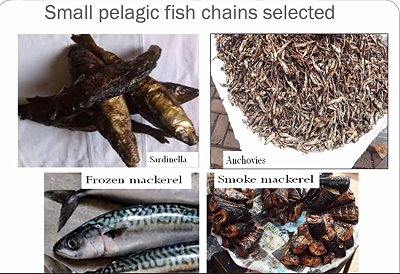 Anderson Kwasi Ahwireng shared results from his PhD research into trading patterns of locally caught and imported fish from the coast into the hinterland. Local fish caught and landed all along the coast are mostly are Sardinella maderensis, S. aurita, anchovy (Engraulis encrasicolus), Atlantic chub mackerel (Scomber colias). In the absence of available refrigeration infrastructure conservation is principally by smoking and drying.
Anderson Kwasi Ahwireng shared results from his PhD research into trading patterns of locally caught and imported fish from the coast into the hinterland. Local fish caught and landed all along the coast are mostly are Sardinella maderensis, S. aurita, anchovy (Engraulis encrasicolus), Atlantic chub mackerel (Scomber colias). In the absence of available refrigeration infrastructure conservation is principally by smoking and drying.
The primarily female traders take the products in all kinds of available containers - sacks, baskets, boxes - and vehicles either to the wholesale market in Accra, the most important in the country, or in the case of smoked fish already up country to the Tamale regional market for further onward sale. Imported fish landed frozen in Tema and Takoradi is either handled along cold chains and reaching the cold storage in Tamale or entering the smoked fish circuits and joining locally fished product chains. Fish mothers are often boat owners and prefinance fishing trips so that the fishers are obliged to sell catches to them at a discount. Big traders keep excess fish for release during the lean season when prices go up, even though there are quality and food safety concerns about produce treated with DDT or formalin to avoid insect infestation.
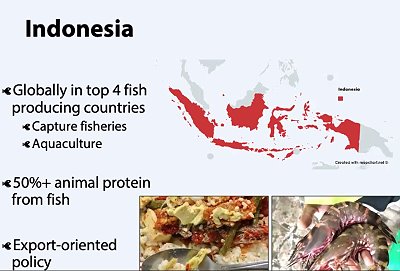 Sharon Suri had spent six months interviewing fish traders in Indonesia. Toke traders prefinance often small traders. Along-Along mobile traders connect to customers in places far from markets. The entire value chain is credit-driven, even customers can often access fish only against credit in the lean season. The mobile traders are key to access to fish food for poor customers. They themselves deal with the inherent uncertainties by reducing prices to avoid spoilage, extend credit and carry an entire assortment of food to balance out any losses in one commodity.
Sharon Suri had spent six months interviewing fish traders in Indonesia. Toke traders prefinance often small traders. Along-Along mobile traders connect to customers in places far from markets. The entire value chain is credit-driven, even customers can often access fish only against credit in the lean season. The mobile traders are key to access to fish food for poor customers. They themselves deal with the inherent uncertainties by reducing prices to avoid spoilage, extend credit and carry an entire assortment of food to balance out any losses in one commodity.
V. Vivekanandan painted a detailed picture of the mostly female fish vendors who usually are one-person businesses selling as much as they can individually per day through door-to-door selling or on way side markets. While these women had formerly bought their fish from the fisher husbands or other male family members the changes in the structure of the industry obliged them now to buy from more distant wholesale markets, often against informal credit. This has become essential for many families as men's incomes are decreasing because of competition with bigger boats and weather related some 100 days at sea, while the women can work 300 days a year to generate at least some income.
He collected many grievances of these women, but also found little policy attention to their condition. Few attempts at support had worked as expected because the real needs and priorities of the women had not been taken into account. In conclusion he argued for rights-based collective action to defend the social and economic rights of these vulnerable groups and suggested that forming cooperatives could help give them also a voice in political processes.
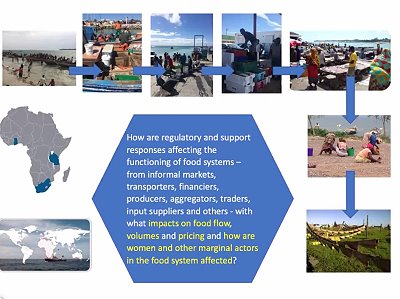 Moenieba Isaacs analysed small-scale fisheries in the context of other food systems in times of covid with emphasis on three African countries, South Africa, Zimbabwe and Nigeria. Government measures had been uneven with some government support to small agriculture producers, but usually not to small-scale fishers.
Moenieba Isaacs analysed small-scale fisheries in the context of other food systems in times of covid with emphasis on three African countries, South Africa, Zimbabwe and Nigeria. Government measures had been uneven with some government support to small agriculture producers, but usually not to small-scale fishers.
She concluded that while many economic activities were digitising their businesses that was hardly the case in various segments of the food systems she had looked at. It was considered useful to support informal food supply channels to poor and vulnerable populations and also repurpose and reimagine how the fish supply chains could function in the future under such conditions.
She called for regulations in favour of low-cost, nutrition-rich food for local consumption rather than export. She also suggested that governments could purchase fish from small-scale fisheries as supplies to schools, hospitals and prisons.
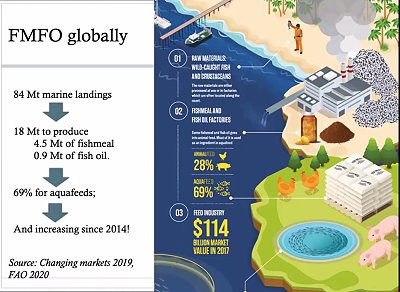 Joeri Scholtens started his talk reminding the audience of global trends. FAO estimated that some 18 million tons of fish had been reduced to fish meals and oils (FMFO) in 2018, an upward trend since 2014. Some 69 percent of the resulting 5+ million tons were destined to aquaculture in the face of its ongoing expansion.
Joeri Scholtens started his talk reminding the audience of global trends. FAO estimated that some 18 million tons of fish had been reduced to fish meals and oils (FMFO) in 2018, an upward trend since 2014. Some 69 percent of the resulting 5+ million tons were destined to aquaculture in the face of its ongoing expansion.
Most of the fish reduced to FMFO is human food grade.
India was witnessing a particularly rapid expansion of shrimp aquaculture (introduced Lithopenaeus vannamei) for export. That expansion required by now almost one third of official landings to be turned into fish meal for that industry. This concerned both artisanal fisheries catches of small fish and industrial catches.
This meant a significantly reduced share of small-fish catches was available for local human consumption. Moreover, big dealers were making long-terms deals and squeezing out out local dealers, even if these could have paid higher prices.
Joeri Scholtens reported that the export-oriented fishmeal sector was highly subsidised and politically protected. He found that the on-going, yet little visible revolution was accompanied by effective messaging in the media. Fishmeal was described as a great way to get a high value product and that it rescued large quantities of fish from being wasted. In reality the on-going redistribution of fisheries resources away from human consumption to export for rich consumers amounted to nothing less than a reduction in food security, particularly of financially poor Indians.
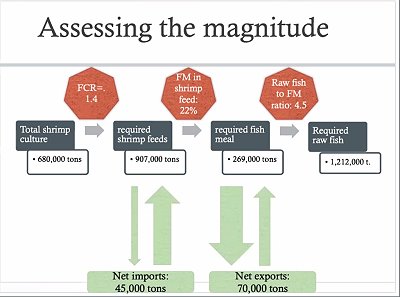 |
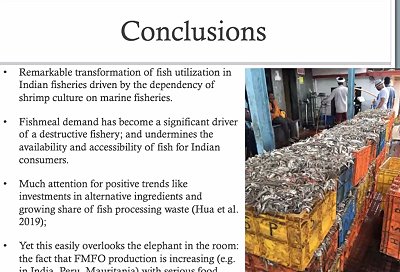 |








